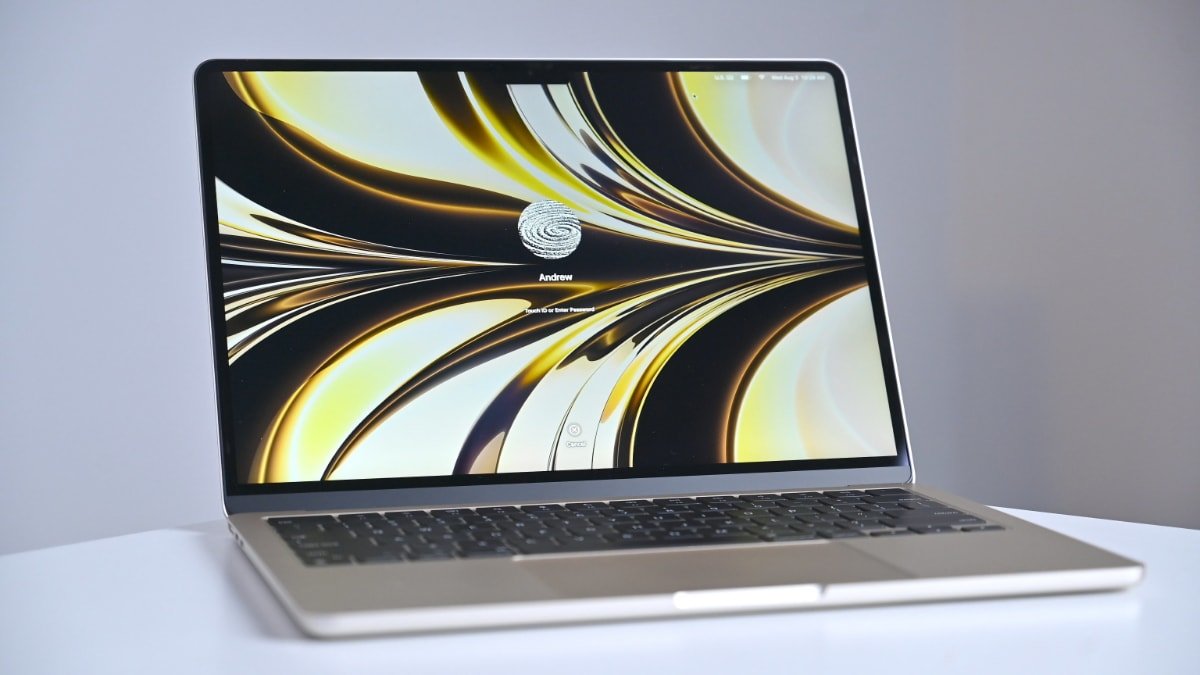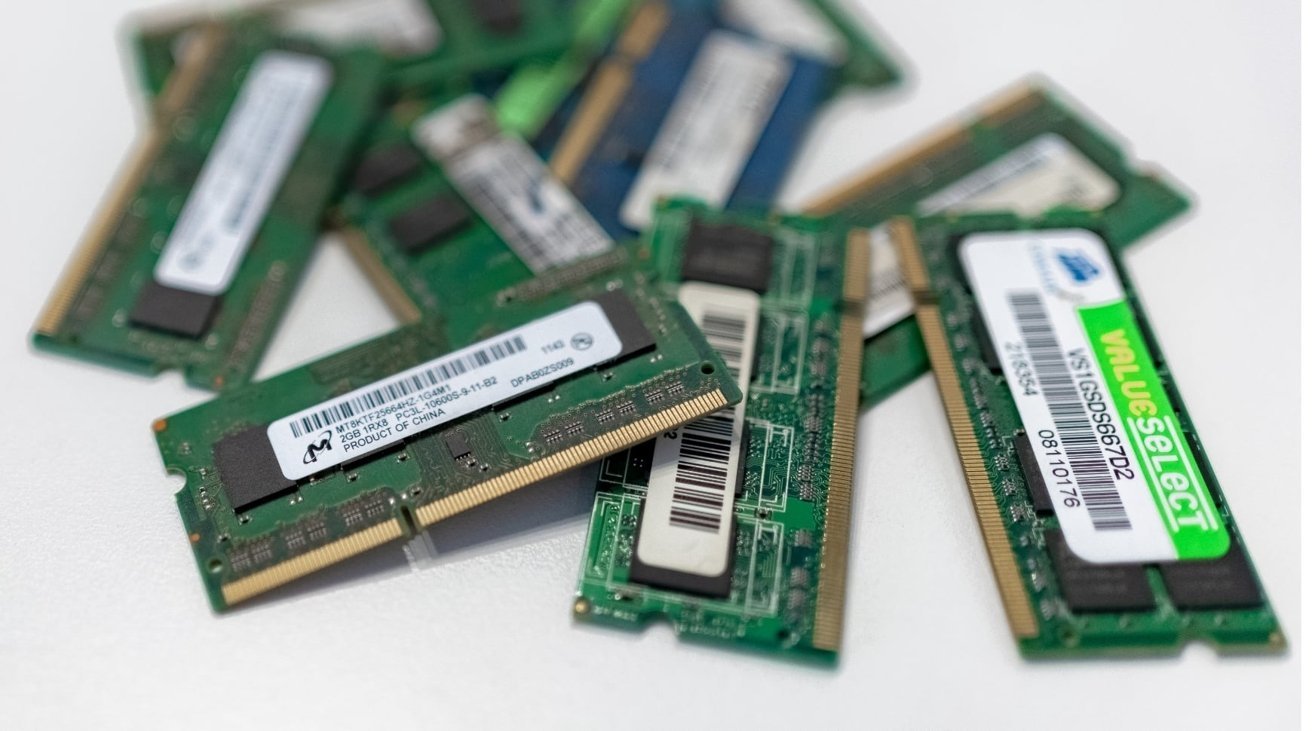When purchasing a new Mac, customers are presented with many memory options to cater to a diverse range of needs. Here are the pros and cons of 8GB, 16GB, 32GB, and more.
The Apple Silicon series of chips for Mac, encompassing the M1 and M2 lineups, support a unified memory range from 8GB up to 96GB, varying with the product generation. As a result, Mac buyers can find themselves figuring out the best memory option to select.
While most computer firms use distinct silicon for CPUs and RAM, Apple employs a "system-on-a-chip" design, integrating various components into one unified chip.
16GB vs. 32GB RAM — Unified memory versus discrete memory
Traditionally, Intel chips operate with separate RAM modules, a stark contrast to Apple Silicon chips, where RAM is seamlessly integrated into the chip. It facilitates quicker memory access and enhances performance across numerous tasks.
The central and graphics processors maintain individual memory reserves in discrete memory systems, operating independently. However, Apple's unified memory strategy allows different chip segments to share a common memory pool, eliminating data duplication and fostering both speed and efficiency.
Choosing the amount of memory is still a separate menu in the Mac purchasing process, and upgrading from the baseline configuration is costly.
For instance, the 2023 14-inch MacBook Pro comes with a baseline of 16GB of memory. An upgrade to 32GB of memory costs $400, and various choices are available up to the top tier of 96GB of memory, equipped with an M2 Max chip, for an added fee of $1,200.
Alternatively, choosing a MacBook Air begins with a default of 8GB of memory, which can be increased to a maximum of 24GB for an additional $400.
16GB vs. 32GB RAM — Different types of memory
Macs can also leverage the high-speed SSD to virtually expand the RAM, a process known as memory swapping, which, while slower than accessing physical RAM, still offers impressive speeds due to the fast SSD in the MacBook Pro.
The speed of physical RAM is high, as it communicates directly with the central processing unit (CPU), ensuring a swift response and operation time. On the other hand, virtual RAM is a simulated memory space that the operating system creates on a computer's hard drive or SSD.
That virtual environment comes into play when the physical RAM is nearing its total capacity, acting as an extended memory space to store data that is not being used temporarily. However, because the speed of virtual memory is slower than the physical silicon, more is needed to guarantee that Mac users will have all the fast memory they need for their uses.
16GB vs. 32GB RAM — Memory for different uses
Choosing the right amount of memory depends on individual computing demands and budgets. For example, an 8GB memory is good for fundamental operations like web browsing and light photo editing.
For those delving into heavier photo editing and basic 4K video editing, a range between 16GB and 32GB proves ideal. Meanwhile, the 64GB to 96GB capacity, available in high-end devices like the MacBook Pro, caters to professionals engaged in 4K and 8K video editing and 3D animation, offering a powerhouse solution for intensive projects.
Most Mac buyers will be okay with 8GB for web surfing, basic word processing, and routine tasks. If you're reading this, you probably want 16GB of RAM, as those options will cover most computing tasks you run into.
Those with unique needs, such as professional photographers and developers, may need to consider higher memory options.
Mac users who plan to keep their machines for many years may want to choose more memory to future-proof their devices.
 Andrew Orr
Andrew Orr








-m.jpg)






 Malcolm Owen
Malcolm Owen
 Marko Zivkovic
Marko Zivkovic
 Christine McKee
Christine McKee

 Andrew O'Hara
Andrew O'Hara
 William Gallagher
William Gallagher

 Mike Wuerthele
Mike Wuerthele




-m.jpg)



13 Comments
Yet another patronising, relatively content-free article with no figures or evidence to back up any of the assertions made.
It is depressing that people get paid to write such pointless crap.
Thanks, Andrew. A nice article covering something that isn't discussed much. I saw someone a few months ago had trouble running Adobe apps with just 8 GB, so I would suggest everyone buy at least 16GB. Just about all my M-series Macs have 16 and I don't have problems keeping 25+ GUI apps running, including the Adobe ones.
Hey Andrew: since they launched, it has been reported (and you cover this in your article) that Apple Silicon machines use memory much more efficiently than their Intel predecessors so that less memory is needed than in the past. Are there any rough estimates of how M-series memory compares to Intel... meaning: XGB of memory in an M-series machine is roughly equivalent to having XGB of memory in an Intel machine. Would appreciate your thoughts about this.
The YouTube videos I have seen say spend the extra money on RAM now, and the $400 you save on SSD Space for a fast external TB or USB3.2Gen2 (whatever the eff they call it) enclosure and a fast SSD for it. You won't notice it's use no matter what your workflow (99% of it).
ChatGPT prompt:
16GB vs. 32GB -- Maximize a Mac's performance by choosing the right amount of memory
Choosing between 16GB and 32GB of RAM for a Mac depends on your specific needs and intended use cases. 16GB is generally sufficient for most everyday tasks such as web browsing, word processing, and light media editing. It's a good amount for typical multitasking as well.
……etc……